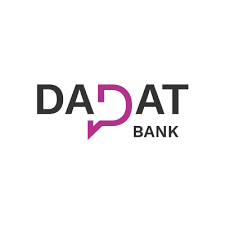About DADAT
Online bank DADAT marks the entry of the GRAWE banking group into the online banking sector. The bank was founded by financial manager Ernst Huber, co-founder of online bank direktanlage.at. In addition to free current accounts, DADAT offers savings accounts and securities transactions.
The financial sector is in a state of flux, with customers increasingly turning towards digital. It was important [for the GRAWE group] not to give fintechs free rein but to become active in this field as well.
The goals
The online banking market is very competitive and increasingly crowded which makes the entry of a newcomer all the more remarkable. Under the leadership of Ernst Huber, a pioneer of online banking in Austria, the new online bank was developed and launched in just nine months ─ received wisdom is that it takes at least two years to get a project such as this off the ground.
The vision was to create the most innovative and flexible online bank in Austria ─ a benchmark of digital banking.
The brand itself as well as the advertising, media planning, social media strategy and website were developed by the Reichl and Partner Communication Group.
Business benefits
a. The system
The bank was implemented on the Ibexa DXP. At the start of the project, the new backend had not yet been fully built for all functionalities, and so Ibexa was connected to the legacy backend.
b. Optimal user experience
An essential requirement for the frontend was a consistently optimal and brand-dominated user experience across all devices. Banking apps and websites generally do a poor job presenting information, especially stock market data.
DADAT was determined to do better with clear, comprehensive, easily searchable data that allowed for user-friendly interactions.
In addition to stock market data and general information pages, the site features market news stories with filtering for a wide set of criteria, as well as a company blog that can also be filtered.
The DADAT frontend was developed on the basis of the latest bootstrap version with Patternlab. Patternlab’s Atomic Design approach allowed for rapid and consistent frontend development by multiple developers working in parallel. The automation of all CSS processes using GRUNT supported this rapid development and resulted in a very compact code.
c. User-friendliness and flexibility for editors
Flexible content maintenance was an essential requirement.
To this end, the concept of “sectional content”, a proven solution developed by Reichl und Partner eMarketing, was used in the project.
Editors can create each page individually based on ready-made grids and content objects. Of course, all the deployed grids and content objects are developed and tested for complete responsiveness.
First, the editor chooses one of several templated grids.
In each grid area, he or she can then simply insert and complete one of the many content objects provided: accordion, tabs, sliders, videos, galleries, text and many more.
A page can contain any number of grids and content objects.
For example: 12/12 with a slider, followed by 6/12 + 6/12 with text and video, followed by 4/12 + 8/12 with text and an accordion for FAQs.
d. Extensive integrations
The primary integration was to connect to an exchange information system (teletrader.com).
All live price and corporate data from securities traded around the world are retrieved via Teletrader’s connectors, built individually for each security type, and presented in a clear and easy-to-read way. Since the Teletrader interface is extremely fast, share data is displayed instantly and users experience no lag.
In the presentation of stock market data, special emphasis was put on optimization for mobile devices. Comprehensive tabular information is usually difficult to read on smartphones.
Another important aspect of the Teletrader integration is the caching of data. Every user wants the information as quickly and correctly as possible. To achieve this, the caching per security type can be individually parameterized, as the prices of a bond or a fund typically fluctuate at a significantly rate than those of a leverage certificate or covered warrant.
For some categories ─ the market overview, for example ─ a push interface for price information was implemented.
The starting page features a social wall that uses stored hashtags to aggregate selected social media feeds about business and the stock market.
Another integration point connects the newsletter to DADAT’s CRM system. Through an XML-RPC interface, newsletter registrations are forwarded directly, as well as registrations for events and webinars, which are then actioned individually in the newsletter and CRM systems.
Google Tag Manager was integrated for web management. In addition to the standard functionalities, comprehensive event and conversion tracking was also implemented.
To increase speed, in addition to optimal caching and server-side compression, a Content Delivery Network (CND.77) was also connected for the delivery of videos and images.
Last but not least, the website is also the central login/ logout point for personalized services such as the Online Banking and Online Trading applications.
The results
Time is money ─ and so the biggest win was that this project could be implemented in just seven to eight months from the signature to launch.
“eZ Platform was recommended to us by our online agency Reichl und Partner eMarketing and we are extremely satisfied with this recommendation, as we now have a secure, stable and high-performance website that is also easy and flexible to maintain for our online editors. I know from experience how crucial this is because I have already managed two other online banks.”
